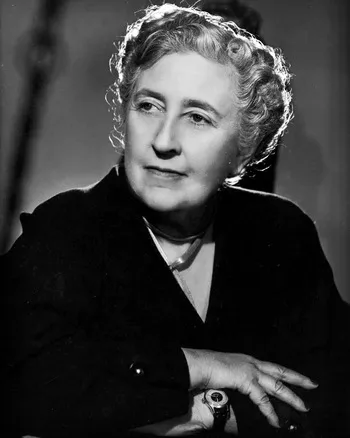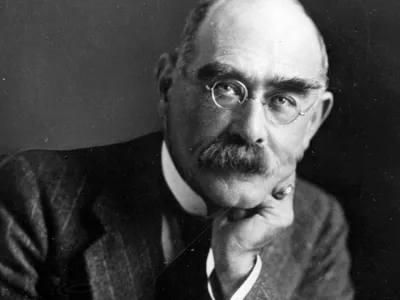Jobs literary figures once held

Delve into the lives of renowned literary figures who faced the pivotal choice of either retaining their day jobs or leaving them behind to embrace their true passion for the written word. Read on to discover how some of them drew inspiration from their jobs, seamlessly integrating their work experiences into their literary masterpieces.
Agatha Christie
Agatha Christie, the beloved 'Queen of crime, has left an indelible mark on the genre of detective fiction. However, it may surprise you to learn that prior to her literary success, the English author worked as a pharmacist's assistant until the conclusion of World War I. In 1914, when the U.K entered into war with Germany, Christie promptly joined the Voluntary Aid Detachment, dedicating the next four years to caring for injured soldiers at a military hospital. It was during this period that she drew upon her pharmaceutical knowledge, particularly in the realm of poisons, to craft her debut novel, The Mysterious Affair at Styles. Christie's involvement in the pharmacy profession was not limited to World War I, as she resumed her duties during World War II, amassing countless hours of invaluable work. Her experiences as a wartime pharmacist undoubtedly honed her ability to "imagine worst-case scenarios, gruesome deaths, and pharmaceutical murder”. Kathryn Harkup says in her book, A is for Arsenic: The Poisons of Agatha Christie.
Harper Lee
Harper Lee, the renowned American novelist, revolutionised literary history in 1960 with her groundbreaking work, To Kill a Mockingbird, fearlessly bringing the issue of racial injustice to the forefront. Prior to this transformative moment, Lee supported herself as an airline ticketing agent while embarking on a quest for a writing career after leaving law school. Despite her demanding day job with Eastern Airlines and British Overseas Airways Corporation. Lee tenaciously pursued her passion by crafting articles and short stories in her spare time. In a fortunate turn of events in 1956, fate smiled upon her. Through her childhood friend-turned-writer Truman Capote, Lee crossed paths with the esteemed American Broadway composer Michael Brown. Remarkably, during the joyous Christmas holidays, Brown gifted her an extraordinary present-a whole year’s worth of wages-along with a heartfelt message. This granted her the freedom to devote all her time to writing. A mere twelve months later, Lee presented her agent with the initial draft of To Kill a Mockingbird, setting the stage for her exceptional literary career.
Sir Arthur Conan Doyle
British author Sir Arthur Conan Doyle is renowned worldwide as the visionary behind Sherlock Holmes, one of English literature's most iconic fictional characters. However, his contributions extend far beyond being the pioneer of modern detective literature. In 1881, Doyle earned his Bachelor of Medicine and Master of Surgery qualifications from Edinburgh, followed by an M.D. in 1885 upon completing his thesis. During his tenure as a general practitioner, he dedicated particular attention to ophthalmology (diagnosis and medical treatment of the eyes), studying the field in Vienna and working alongside renowned ophthalmologists in Paris. Upon returning to London, he established an ophthalmological practice near Harley Street. It was during his time as a medical student that Doyle was profoundly influenced by his professor. Dr Joseph Bell, whose exceptional ability to observe the minutest details about a patient's condition served as the inspiration for Sherlock Holmes, the ultimate master of deductive reasoning. In 1891, Doyle experienced a severe influenza-induced health crisis, which prompted him to reevaluate his life's priorities. Merely a year later, the first collection of 12 stories featuring the adventures of Sherlock Holmes was published.
T.S. Eliot
T.S. Eliot, the distinguished recipient of the 1948 Nobel Prize in Literature, stands tall as one of the most influential American poets of the 20th Century. Remarkably, Eliot sustained himself through various roles as a teacher, banker, and editor throughout his life. Since poetry remained his true passion, he pursued it during his spare moments. From 1917 to 1925, Eliot worked in the foreign transactions department at Lloyd's Bank, dedicating his days to the financial realm. However, in 1921, following a nervous breakdown, he took a break from his banking career and completed his magnum opus. The Waste Land, which was edited by his friend and fellow American poet, Ezra Pound. Pound, along with a collective of writers, established Bel Esprit, a fund aimed at financially supporting Eliot's transition to full-time writing. Despite Pound's success in gamering pledges from several subscribers, Eliot refused to accept the money and remained resolute in retaining his day job. Nonetheless, The Liverpool Post, Chicago Daily Tribune, and the New York Tribune mistakenly reported that Eliot had accepted the funds while maintaining his position at the bank. Eliot expressed his disagreement, prompting the newspapers to publish retractions. In 1925, Eliot eventually parted ways with Lloyds, embarking on a new path as an editor at a publishing house.
Stephen King
Renowned for his spine-chilling and hair-raising novels such as The Shining, It and Carrie. American author Stephen King has reigned supreme in the horror genre for over five decades. His gripping tales have not only captivated readers but also found immense success on the silver screen, becoming blockbuster hits. As a young boy, King stumbled upon a treasure trove of fantasy-horror fiction books that once belonged to his father, igniting his passion for writing. By the tender age of seven, he had already embarked on his own storytelling journey. However, as he pursued his dream, King faced the need to support himself through various odd jobs. He toiled as a janitor, manned gas pumps, and even worked at an industrial laundry facility, all while persistently crafting and submitting short stories for publication. This striking career transition vividly illustrates that one's current occupation does not determine their lifelong path. Instead, any job can serve as a stepping stone to something greater, as King's remarkable journey exemplifies.
Picture Credit : Google
